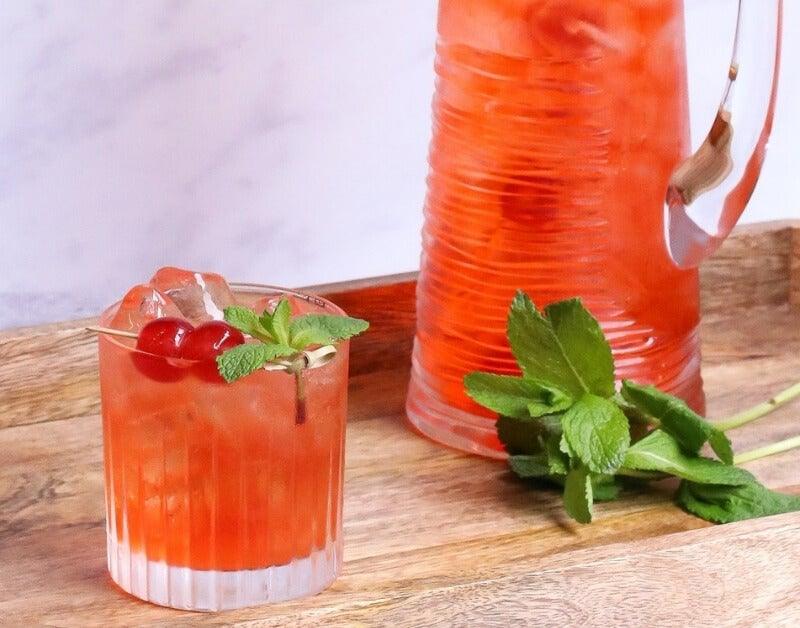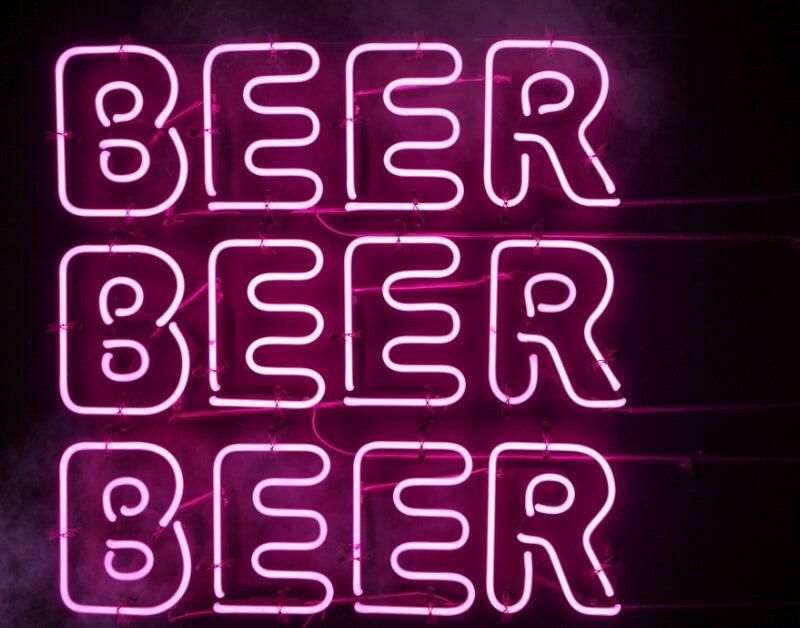Can I Drink Non-Alcoholic Beer While Pregnant?

Can I drink non-alcoholic beer while pregnant?
It’s a question we get a lot. Which is not surprising, considering that the first group people tend to think of when we tell them we run a website dedicated to non-alcoholic beer, wine, and spirits is, “Oh, that must be great for pregnant people!”
But when it comes time to imbibe there is often hesitation, as most non-alcoholic beer labels come stamped with a potentially concerning disclaimer: Contains less than 0.5% alcohol by volume.
Wait…non-alcoholic beer can contain alcohol? Well, sort of. But similar to our recent guide – Is Non-Alcoholic Wine Safe During Pregnancy? – our goal today is to clear up some of the misconceptions, and help you understand exactly what goes into each can or bottle of delicious non-alcoholic beer.
Please note: the most important conversation you can have about what to eat and drink while pregnant is the one you have with your doctor. Our intention with this guide is to provide some additional context and materials to help you have a more guided conversation with your healthcare provider. Please be sure to discuss any questions or concerns you have with them…it’s their job to help you navigate the wonders of pregnancy!

Is Non-Alcoholic Beer Safe During Pregnancy?
Yes, non-alcoholic beer is safe during pregnancy. The trace amounts of alcohol in non-alcoholic beer is less than pregnant women may already be consuming in many fresh fruits and juices, including apple juice and ripe bananas. While it's always important to talk with your doctor first before choosing to consume non-alcoholic beer during pregnancy, millions of women find it to be a helpful tool to quit alcohol while pregnant.
What Exactly is Non-Alcoholic Beer?
Non-alcoholic beer is a beer (or as the U.S. government designates them, an “alcohol free malt beverage” – more on that another day) that contains less than 0.5% alcohol by volume (ABV). This ABV threshold is the uppermost limit that a beverage can contain and still call itself “non-alcoholic” – though as we explain later in this piece, many non-alcoholic beers you’ll find on the market contain much less than 0.5%.
Non-alcoholic beer can be made using a variety of techniques, including:
Reverse Osmosis
With this method, a traditional alcoholic beer is crafted to the brewer’s specifications. From there, it is sent through a reverse osmosis process, where high-pressure forces the beer through a special membrane that separates the water and alcohol molecules from the rest of the beer. This water and alcohol mixture is then distilled to separate the alcohol, and the remaining water is mixed back in to combine all the original flavors and aromas, just without the alcohol.
Distillation
One of the original methods of crafting non-alcoholic beer, distillation relies on heat to separate the alcohol molecules from a traditionally brewed beer. Unfortunately, heat is known to kill aromas and flavors, leaving a very lackluster non-alcoholic beer behind. But advances in technology have created tools and systems where brewers can heat their beer in a vacuum environment, meaning the temperature required is much lower than it would be in an open space, allowing more of the beer’s flavor to stay intact.
Controlled (Arrested) Fermentation
Alcohol in beer is created when yeast breaks down sugars. Some non-alcoholic brewers have figured out how to better control this process, using special forms of yeast, low sugar grains, and fermentation manipulation that allows them to stop the yeast before the beer reaches 0.5% alcohol by volume. This means there is no heat or expensive reverse osmosis equipment required to craft their alcohol-free brew.

How Much Alcohol is in Non-Alcoholic Beer?
As you can see, brewers have a variety of ways to craft non-alcoholic beer. And each of these methods has an effect on the final alcohol content of the product.
Since several of the methods used to craft non-alcoholic beer begin with brewing a traditional alcoholic one, you can probably understand why most non-alcoholic beers have some sort of residual alcohol content. As explained earlier, the U.S. government threshold for non-alcoholic beer is 0.5% alcohol by volume or less.
Depending on the methods used, some non-alcoholic brewers will come close to this 0.5% threshold, while others – such as Heineken 0.0 and Bud Zero – claim to have 0% ABV (though these claims have been met with skepticism by some brewers). Based on all the interviews and research we’ve compiled, as a general rule of thumb it seems that most NA beers on the market tend to fall somewhere in the range of 0.2%-0.4% alcohol by volume. But since there is no requirement on labeling the exact percentage (so long as it’s under 0.5%), it’s difficult to know just how much residual alcohol is in each style of alcohol-free beer.
But as we’re about to explore, this trace ABV number may not be as important as you think…

What is Alcohol by Volume (ABV) and How Does it Affect Me?
Now that you know how non-alcoholic beer is brewed, and why some residual alcohol can be left behind, those Contains less than 0.5% alcohol by volume disclaimers likely make a little more sense. But what does this residual alcohol by volume mean for you and your pregnancy?
Well, a typical alcoholic beer will generally have somewhere around 5% alcohol by volume…10 times the amount of the highest non-alcoholic beer. And those IPA’s and other craft beers at your local brewery? Those are often 6-8% or more! Meaning 0.5% is a literal fraction of what you would consume with just one standard beer.
Of course, the U.S. Center for Disease Control makes it clear that there is no known safe amount of alcohol one can consumer while pregnant. But what it doesn’t make clear, and something you should be sure to discuss with your doctor, is that there is naturally occurring alcohol present in everyday food and drink items you’re likely already consuming.
For example, that banana and orange juice you had for breakfast? Each of those can contain upwards of 0.5% alcohol on their own. And the burger bun you had at lunch? Depending on the ingredients and how it was prepared, it could have upwards of 1.3% alcohol by volume! That’s almost triple what you’d find in any non-alcoholic beer.
The point being, alcohol is a by-product of fermentation. And this fermentation occurs in many more foods and drinks than just the “adult” variety. Meaning most pregnant individuals are likely already consuming trace amounts of naturally occurring alcohol throughout their pregnancy.
Best Non-Alcoholic Beers to Drink While Pregnant
By now you should have a better understanding of how non-alcoholic beer is made, why some have residual alcohol content, and what that can mean for you and your body. Hopefully this makes it easier for you to talk with your doctor and decide if non-alcoholic beer is right for you during your pregnancy.
If you do decide that you’d like to explore some non-alcoholic beer options while pregnant, we’ve got plenty of non-alcoholic beer reviews to help you discover the perfect suds. Check out some of these resources and see what we’ve identified as the best non-alcoholic beers to drink while pregnant:
21 Best Non-Alcoholic Beers to Try in 2021
Review: Athletic Brewing Company Non-Alcoholic Beer
Review: Gruvi Prosecco, Rosé, and Non-Alcoholic Beer
Is it Safe to Drink Non-Alcoholic Beer While Pregnant?
In the end, the decision to drink non-alcoholic beer is completely up to you and your doctor. But we hope this guide provides you with a little bit more clarity on what goes into each can of NA beer, and why many are stamped with the disclaimer Contains less than 0.5% alcohol by volume.
For those that decide they want to enjoy the occasional non-alcoholic beer while pregnant, there is a wide world of options these days, leaving little doubt you’ll be able to find something special to enjoy while you wait for your little one to greet the world!





